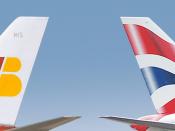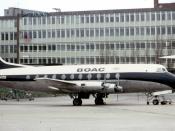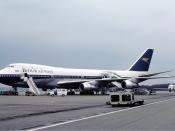Introduction
The predecessor of British Airways was Imperial Airways - a colonial instrument, which linked the British Empire. From this evolved the British Overseas Airways Corporation (BOAC), which was merged with British European Airways (BEA) to create British Airways. Even after privatisation, British Airways retained the image of being reserved, professional and formal.
Each year, British Airways transports 40 million consumers to 162 destinations. Sixty percent of the firm's business originates overseas. In the nine months ending December 31, 1997, British Airways declared revenues of $11 billion (US), including $763.8 million from cargo operation. This resulted in net income of $854.3 million, placing British Airways among the most profitable airlines in the world (see Table I). In 1998, the public limited company had 60,000 employees, up from 35,000 in 1983.
An overview of the industry
The airline industry has undergone significant restructuring in recent years. Airlines, formerly rivals in a highly regulated industry, have become opportunistic seekers of co-operation.
In today's world, mega-carriers and small airlines are working together rather than competing with one another. Forms of co-operation include sub-contracting, code-sharing, franchising and the formation of global marketing networks. Such alliances allow firms to focus on their respective core competencies, while drawing the benefits of scale economies. In essence, co-operation among competitors has led to increased competitiveness. This has accelerated the trend of joint marketing, and the airline has become characterised by the desire to belong to a global network. The tendency has been to strive for a global presence.
There are several means to expand in the airline industry. The traditional (and relatively slow) way for an airline to expand is to add flights to its schedule, using its own equipment and crew. For decades, this was the typical means to expansion. Growth was generally incremental. To cite...



Aina
description is good with tables
0 out of 0 people found this comment useful.